|
 Secure Site
Secure Site
|
 |
Archive for the 'Progressive Awakening' Category
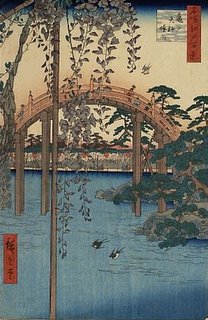 Kamedo Tenjin Shrine: drum bridge in the garden, Hiroshige ukiyo-e During the Asuka period (538-710), gardens were supposed to express Buddhism and Taoism through replicating the mountainous regions in China.
During the Heian period (794-1185), gardens shifted from solely representing religious beliefs to becoming, “a place for ceremonies, amusement, and contemplation” (Miller).
 peter in a japanese garden In the Kamakura and Muromachi periods (1185-1573), a great many gardens were created during these two time periods due to improved garden techniques and the development of Syoinzukuri style. Zen beliefs were also flourishing at this time and had great influences over garden techniques and purposes. Another factor that allowed gardens to flourish stems from the fact that the shoguns simply enjoyed gardens.
After the Muromachi Period, Japanese tea ceremonies became an intricate part of Japanese culture. Sen no Rikyu (1517-1591) created the traditional style of a tea house where there was usually a roji (“dewy path”) leading to the house. Besides the tea houses, gardens constructed in the Edo period (1603-1868) reflected the tastes and style of each individual shogun ruler. Instead of being a religious symbol, gardens shifted to being a symbol of a shogun’s prestige and power (Miller).
adapted from wikipedia.org
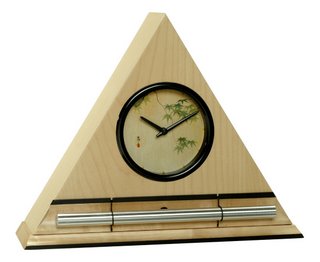 Zen Clocks by Now & Zen Now & Zen
1638 Pearl Street
Boulder, CO 80302
Posted in Japanese Inspired Zen Clocks, Now & Zen Alarm Clocks, Progressive Awakening, Zen Gardens, Zen Timers
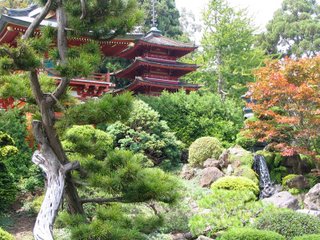 Hagiwara Japanese Tea Garden in San Francisco, California, showing the use of stone, water and plants Tsukiyama Gardens often copy famous landscapes from China or Japan, and they commonly strive to make a smaller garden appear more spacious.
This is accomplished by utilizing shrubs to block views of surrounding buildings, and the garden’s structure usually tries to make onlookers focus on nearby mountains in the distance. By doing this, it seems that the garden has the mountains as part of its grounds. Ponds, streams, hills, stones, trees, flowers, bridges, and paths are also used frequently in this style.
adapted from wikipedia.org
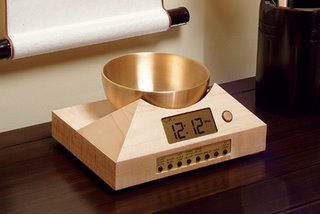 Zen Timer for meditation by Now & Zen Inc.
Now & Zen
1638 Pearl Street
Boulder, CO 80302
(800) 779-6383
Posted in Beauty, Natural Awakening, Now & Zen Alarm Clocks, Progressive Awakening, Zen Gardens, Zen Timepiece by Now & Zen, Zen Timers
 stillness Water gardens, also known as aquatic gardens, backyard ponds and garden ponds, usually referring to a man-made feature, typically combine a pool with aquatic plants and often ornamental fish. Fixed items such as rocks, fountains, statuary, waterfalls and watercourses can be combined with the pool to add visual interest and integration with the local landscape and environment.
Water gardens are a perfect place for a mindfulness practice.
adapted from wikipedia.org
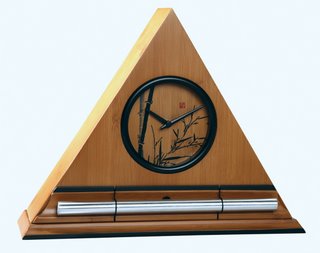 Bamboo Zen Chime Clock
Now & Zen
1638 Pearl St.
Boulder, CO 80302
Posted in Chime Alarm Clocks, Japanese Inspired Zen Clocks, Meditation Timers, Meditation Tools, Progressive Awakening, Well-being, Zen Timers
 Maneki Neko on Peter's kimono at Ten Thousand Waves Spa, Santa Fe, NM The Maneki Neko (“Beckoning Cat”; also known as Welcoming Cat, Lucky Cat, Money Cat, or Fortune Cat) is a common Japanese sculpture, often made of ceramic, which is believed to bring good luck to the owner. The sculpture depicts a cat (traditionally a Japanese Bobtail) beckoning with an upright paw, and is usually displayed—many times at the entrance—in shops, restaurants, and other businesses. Some of the sculptures are electric or battery-powered and have a slow-moving paw beckoning. I n the design of the sculptures, a raised right paw supposedly attracts money, while a raised left paw attracts customers.
To Westerners it may seem as if the Maneki Neko is waving rather than beckoning. This is due to the difference in gestures and body language recognized by Westerners and the Japanese, with Japanese beckoning by holding up the hand, palm out, and repeatedly folding the fingers down and back up, thus the cat’s appearance.
While it is believed that Maneki Neko first appeared during the later part of the Edo period (1603-1867) in Japan the earliest documentary evidence comes from the 1870s, during Japan’s Meiji Era. It is mentioned in a newspaper article in 1876 and there is evidence kimono-clad Maneki Neko were distributed at a shrine in Osaka during this time.
 Black Lacquer Zen Alarm Clock adapted from wikipedia.org
Now & Zen
1638 Pearl Street
Boulder, CO 80302
Posted in Chime Alarm Clocks, Japanese Inspired Zen Clocks, Now & Zen Alarm Clocks, Progressive Awakening, Zen Timers
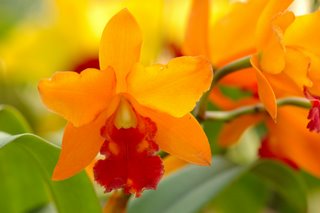 Buddhist Loving Kindness Buddhist loving kindness Mettā or maitrī (sanskrit) has been translated as loving-kindness, friendliness, benevolence, amity, friendship, good will, kindness, love, sympathy, and active interest in others.
It is one of the ten paramitas of the Theravada school of Buddhism, and the first of the four Brahmaviharas. The mettā bhāvanā (“cultivation of mettā”) is a popular form of meditation in Buddhism.
“Loving-kindness” is a term first used in the 1535 Coverdale Bible. The idea is associated with the Christian concept of agape, or love of God, which is reflected in the quote:
“God is inherently kind, naturally compassionate, and everlastingly merciful. And never is it necessary that any influence be brought to bear upon the Father to call forth his loving-kindness.”
Beyond Christianity, English translations of the writings of the Bahá’í Faith also use the term “loving-kindness” when referring to the original Persian “mohabbat”.
Buddhist Loving Kindness adapted from wikipedia.org
Posted in Chime Alarm Clocks, Meditation Timers, Meditation Tools, mindfulness practice, Natural Awakening, Now & Zen Alarm Clocks, prayer, Progressive Awakening, Well-being, Yoga Timer, Yoga Timers by Now & Zen, Zen Timers
a haiku master, Matsuo Basho from Japan
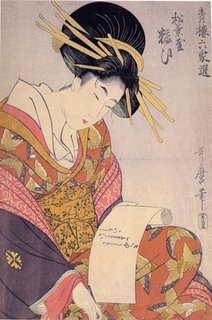 Haiku Ukiyo-e by Kitagawa Utamaro, woodblock print Matsuo Bashō (1644 – 1694) was the most famous poet of the Edo period in Japan. During his lifetime, Bashō was recognized for his works in the collaborative haiku no regata form; today, after centuries of commentary, he is recognized as a master of brief and clear haiku.
Despite his success, Bashō grew dissatisfied and lonely. He began to practice Zen meditation.
“Spring morning marvel
lovely nameless little hill
on a sea of mist”
–haiku by Basho translated by Peter Beilenson
 - Zen Alarm Clock in Maple Finish, Japanese Leaves Dial Face
wikipedia.org
Now & Zen
1638 Pearl St.
Boulder, CO 80302
Posted in Cherry Blossoms, Chime Alarm Clocks, Japanese Inspired Zen Clocks, Japanese Poetry, Meditation Tools, Natural Awakening, Now & Zen Alarm Clocks, Progressive Awakening, Zen Timers
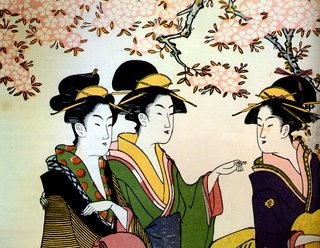 Courtesan Hanaogi of Ogi-ya by Chokosai Eisho, Now & Zen ukiyo-e detail Japanese poets first encountered Chinese Poetry when it was at its peak in the Tang Dynasty. It took them several hundred years to digest the foreign impact, make it a part of their culture and merge it with their literary tradition in their mother tongue, and begin to develop the diversity of their native poetry. For example, in the Tale of Genji both kinds of poetry are frequently mentioned.
A new trend came in the middle of the 19th century. Since then the major forms of Japanese poetry have been tanka (new name for waka), haiku and shi.
In Japan during the ancient times, it was a custom between two writers to exchange waka instead of letters in prose. In particular, it was common between lovers. Soon after in Japan, making and reciting waka became a part of aristocratic culture.
wikipedia.org
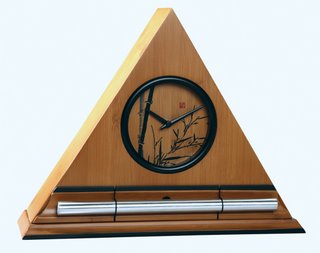 Bamboo Zen Clocks, progressive chime clock and timer Now & Zen Headquarters
1638 Pearl Street
Boulder, CO 80302
(800) 779-6383
Posted in Cherry Blossoms, Japanese Inspired Zen Clocks, Japanese Poetry, Meditation Timers, Meditation Tools, Natural Awakening, Now & Zen Alarm Clocks, Progressive Awakening, Zen Timers
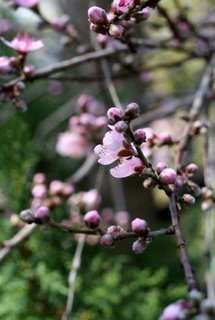 Pink Sakura, Now & Zen Inc. A cherry blossom is the name for the flower of cherry trees known as Sakura in Japanese.
Cherry blossom is an omen of good fortune and is also an emblem of love, affection and represents spring. Cherry blossoms are an enduring metaphor for the fleeting nature of life, and as such are frequently depicted in art.
Cherry blossoms and leaves are edible and both are used as food ingredients in Japan.
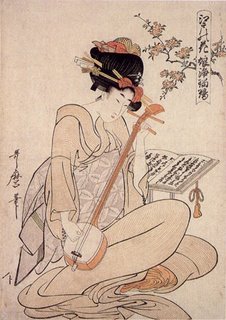 Kitagawa Utamaro Cherry Blossom Flowers of Edo, Now & Zen wikipedia.org
Now & Zen
1638 Pearl St.
Boulder, CO 80302
Posted in Japanese Inspired Zen Clocks, Meditation Timers, Meditation Tools, Natural Awakening, Now & Zen Alarm Clocks, Progressive Awakening, Zen Timers
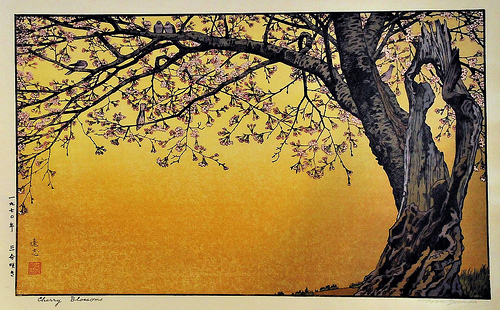 Ukiyo-e Toshi Yoshida Sanbu Zaki Cherry Blossoms In Japan cherry blossoms symbolize clouds due to their nature of blooming en masse, besides being an enduring metaphor for the ephemeral nature of life, an aspect of Japanese cultural tradition that is often associated with Buddhistic influence.
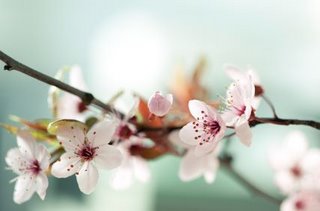 cherry blossoms like clouds The transience of the blossoms, the extreme beauty and quick death, has often been associated with mortality; for this reason, cherry blossoms are richly symbolic, and have been utilized often in Japanese art and film, as well as at musical performances for ambient effect.
from wikipedia.org
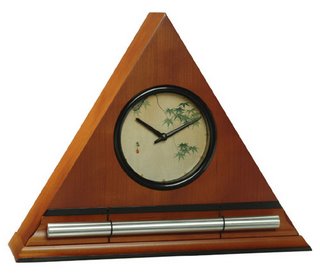 Zen Clocks by Now & Zen, Boulder, CO
Now & Zen Headquarters
1638 Pearl Street
Boulder, CO 80302
(800) 779-6383
Posted in Chime Alarm Clocks, Japanese Inspired Zen Clocks, Meditation Timers, Now & Zen Alarm Clocks, Progressive Awakening
...the art of the ‘tea ceremony’ inspired by Japan continued…
 Zen Timepiece, a timer for the 'way of tea' ceremony In that the Japanese tea ceremony is conventionally conducted sitting on tatami, seiza is integral to it. Unless it is the ryūrei style of tea ceremony, which employs chairs and tables, both the host and guests sit in seiza throughout.
To sit seiza-style, one first kneels on the floor, folding one’s legs underneath one’s thighs, while resting the buttocks on the heels. The ankles are turned outward as the tops of the feet are lowered so that, in a slight “V” shape, the tops of the feet are flat on the floor and big toes are overlapped, and the buttocks are finally lowered all the way down. Depending on the circumstances, the hands are folded modestly in the lap, or are placed palm down on the upper thighs with the fingers close together, or are placed on the floor next to the hips, with the knuckles rounded and touching the floor. The back is kept straight, though not unnaturally stiff. Traditionally, women sit with the knees together while men separate them slightly.
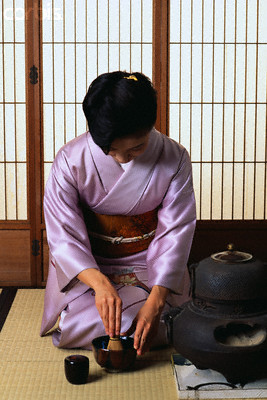 Japanese woman performing tea ceremony in seiza sitting position Stepping into and out of seiza is mindfully performed. There are codified traditional methods of entering and exiting the sitting position depending on occasion and type of clothing worn.
All the bows (there are three basic variations, differing mainly in depth of bow and position of the hands) performed during tea ceremony originate in the seiza position.
from wikipedia.org
Posted in Japanese Inspired Zen Clocks, Meditation Timers, Meditation Tools, Now & Zen Alarm Clocks, Progressive Awakening
« Previous Page
Next Entries »
|
|
|
|